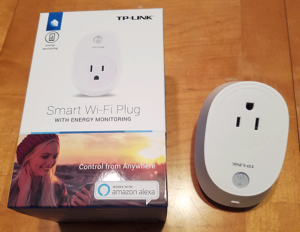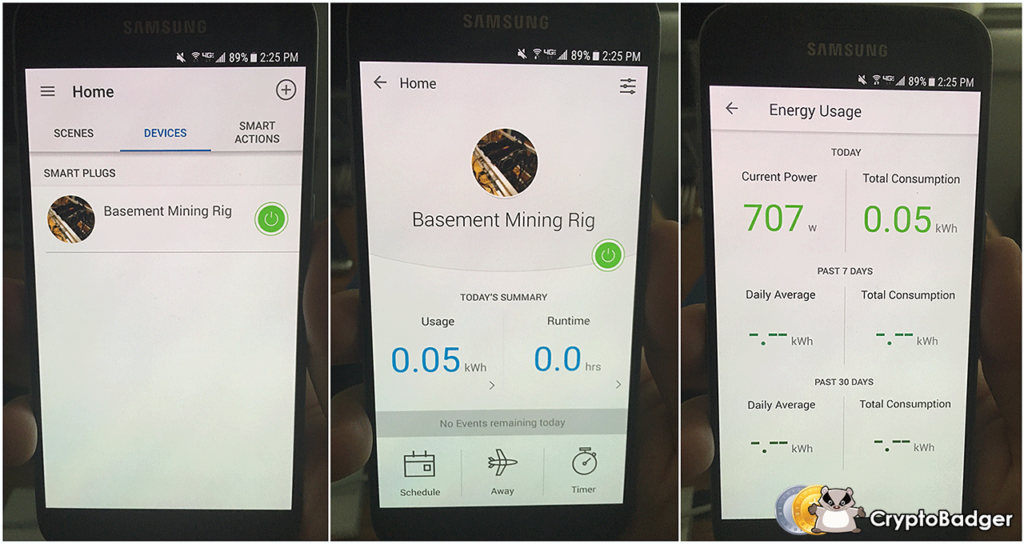 Last weekend, I took a few days to visit with family in another state. Shortly after arriving, I noticed that I had an alert from nanopool.org indicating that my mining rig was offline. I didn’t pay much attention to it, as I’ve received a few false positives before, and my rig hadn’t crashed in nearly 90 days.
Last weekend, I took a few days to visit with family in another state. Shortly after arriving, I noticed that I had an alert from nanopool.org indicating that my mining rig was offline. I didn’t pay much attention to it, as I’ve received a few false positives before, and my rig hadn’t crashed in nearly 90 days.
When I had time later that evening, I checked on my miner and found that it indeed hadn’t submitted any work in hours. I grabbed my laptop, logged into my miner remotely via SSH, and found that one of the GPUs had crashed—causing Claymore to hang (my guess is that my switch to dual-mining the previous week was enough to introduce some instability). No problem, a quick “sudo reboot now” at the prompt should be enough to get it running again, and I could troubleshoot the cause when I returned home in a few days.
Except my miner never came back online. Since I’d be away for three additional days, the missed mining time would cost me about $80. I needed a reliable way to remotely power cycle my rig in the event that something like this happened again in the future.
Enter the TP-Link HS110 Smart Plug. This simple device is exactly what I was looking for: a remotely-accessible power switch for my rig that I can control with my phone from anywhere. Read on for my mini review!
There are quite a few smart plugs to choose from. I opted for the HS110 because TP-Link’s consumer networking products are generally top-notch, the management app seemed full-featured and mature, and the built-in energy monitoring was a nice extra (if you don’t care about energy monitoring, you can save a few bucks on the HS100).
My HS110 arrived from Amazon in a small retail box, which included only the unit itself, a short setup guide, and some warranty information. Setup was an absolute breeze: I just needed to download the Kasa management app (available for both Android and iOS), plug the HS110 into a wall socket, and then walk through setup on the app. About a minute later, I had everything working and was able to turn my HS110 on/off via my phone. It isn’t necessary to configure anything on your router/firewall—setup is handled 100% through TP-Link’s Kasa app.
I walked to HS110 down to my basement, plugged it into a surge protector, and then plugged my rig into the HS110. I powered on via the phone app, and then proceeded to simulate a power outage by unplugging the surge protector from the wall socket. When I plugged the surge protector back in, the HS110 restored power to my rig automatically—after any power interruption, the HS110 is smart enough to return to whatever state it was in prior to the outage. So far, so good.
Note: for the HS110 (or any smart plug) to work, you need to setup your computer’s BIOS to automatically restore power after any power interruption. If you followed my mining rig guide, you’ve probably already done this.
The built-in energy monitoring of the HS110 appears to agree with my kill-a-watt: the HS110 says I’m pulling about 707 watts, and my kill-a-watt reads 701. Close enough.
TP-Link’s Kasa management app is intuitive and does all of the things that you’d expect it to. You can control multiple HS110 smart plugs (or other TP-Link smart devices) through the app, assign each a friendly name (and optionally a photo), and turn things on/off with the touch of a button. There are also a host of timer/scheduling features, but if you’re planning to use this for a 24/7 mining rig, you’re probably not interested in those. Below are a few screens of my rig configured in the Kasa app (click to enlarge):

My rig, attached to a HS110 smart plug and running in TP-Link’s Kasa app. I can turn the rig on/off by simply pressing the green power button, from virtually anywhere in the world (click to enlarge).
In short, I highly recommend the HS110 (or the HS100 if energy monitoring isn’t important to you), especially if you tend to be away from home regularly. I paid about $41 after tax for mine, and if I’d had one last weekend, it would have already paid for itself twice over.



 June 22nd, 2017
June 22nd, 2017  CryptoBadger
CryptoBadger  Posted in
Posted in  Tags:
Tags: 


We just put one in our office to reset a ceiling mounted hotspot periodically. No more ladders!!!
Great shout, I’ve tried training my cat to handle simple household switch operations with no success. Bring on the HS110!
Another benefit to the HS110 is you can tell if a rig is operating at 100% based on the current power usage reported. My rigs use 600+ power when operating at 100%. If I check and see the power is down to 470 on one of my rigs, I know I poteniaLLY have a problem with one of my GPU’s. I use one HS110 on each rig.
This is why this website is my #1 go to for crypto info! I was sure this existed someware! Thanks for posting the info! You should put up a webpage to buy directly mining products from amazon on your website. i believe this gives you incentives!
hi , great post but do you know the reason why it didnt come back ?
if you had for example the option to power cycle it do you think that doing that would have resolved the issue?
thanks
Di
Hi, I have issues with my rig with freezing, when rig freeze i’m not able to access it whatsoever. I have to manually power off the rig and power it up. Is this device capable to do an reset or start of a rig that has been shutdown ? With wake on lan activated ?
Rgs
I use this one. Broadlink SP2,
1. Cheap
2. English
3. UK/US
4. Power monitor with calculator.
https://www.banggood.com/BroadLink-SP2-WiFi-Intelligent-Smart-Socket-Plug-Switch-Automatic-Remote-Control-UK-US-Plug-p-1025566.html?p=B314111627939201505G
Great price, but it’s only rated at 10a vs 15a on the tplink
I have just got one of these and it doesn’t report the power usage correctly on my rigs.
I have an old style LCD Watt meter that reports my rigs at around 700W each at full load. The TP Link HS110 reports them at around 380W. This is a big difference and makes the product useless.
Does anyone else have issues like this or know of a way of perhaps recalibrating the TP Link device? I trust my other Watt meter to be correct so the TP Link is clearly way off the mark. Perhaps I have a faulty unit?
Thanks
Nick
What about if your rig freezes and you’re not able to respond to an alert and remotely restart it with the TP Link? (sleeping, no cell service, etc) I’ve been trying to find a watchdog device that can monitor and power cycle the rig if it hangs up like mine did this morning at 3am, costing me 4 hours of mining time. A USB watchdog wouldn’t have worked because Windows itself was completely frozen and the only way I could restore was to do a hard power cycle (reset button wouldn’t even respond). Unfortunately the only option I’ve found is a watchdog power strip that runs $110 plus shipping on Amazon… Great concept, but it’s also a cost you need to recover before you can maintain profitability.
Any thoughts on a more automated way to ensure the rig resets itself?
I’m not aware of any packaged solutions that will do exactly what you’re looking for, but the TP-Link switches are scriptable. If you’re comfortable writing a bit of code, you should be able to have them perform a power cycle automatically in response to pretty much any custom trigger.
Here is an example of how to power cycle a TP-Link switch using IFTTT. You should be able to use IFTTT to trigger this on something like a miner pool warning email, if your pool sends them when one of your miners goes offline.
I use the Xiaomi smart power strip:
https://xiaomi-mi.com/news-and-actions/new-mi-smart-power-strip-by-xiaomi/
The only issue is that it has the Chinese/Australian (type I) plug and socket. I use an adapter to connect to the mains and a cable with Chinese type plug to connect to the PSU.
If you live in China/Australia/New Zealand you won’t need adapters.
I just got one of these and it made my rig very unstable. Once I plugged it in and configured it my rig dropped off every hour or so for 5 or 10 minutes. I unplugged it and now my rig is back to solid 24/7 with no drop offs.
I really wanted this to work because it seems like a great tool. Has anyone else seen this type of behavior? Does the unit have a max power limit?
That’s certainly odd. The HS110 can handle up to 1800 watts – considerably more than most smart plugs (should be fine for a 12+ GPU rig). I’ve been using mine for over 8 months now without any issues at all – possibly you received a defective unit?
Glad to be one of the visitors on this awful internet site :D.
After I initially commented I appear to have clicked the -Notify me when new comments
are added- checkbox and from now on every time a comment is added I recieve four emails with the same
comment. Is there an easy method you can remove me from that service?
Thanks a lot!
I have been absent for some time, but now I remember why I used to love
this website. Thanks, I’ll try and check back more often.
How frequently you update your site?